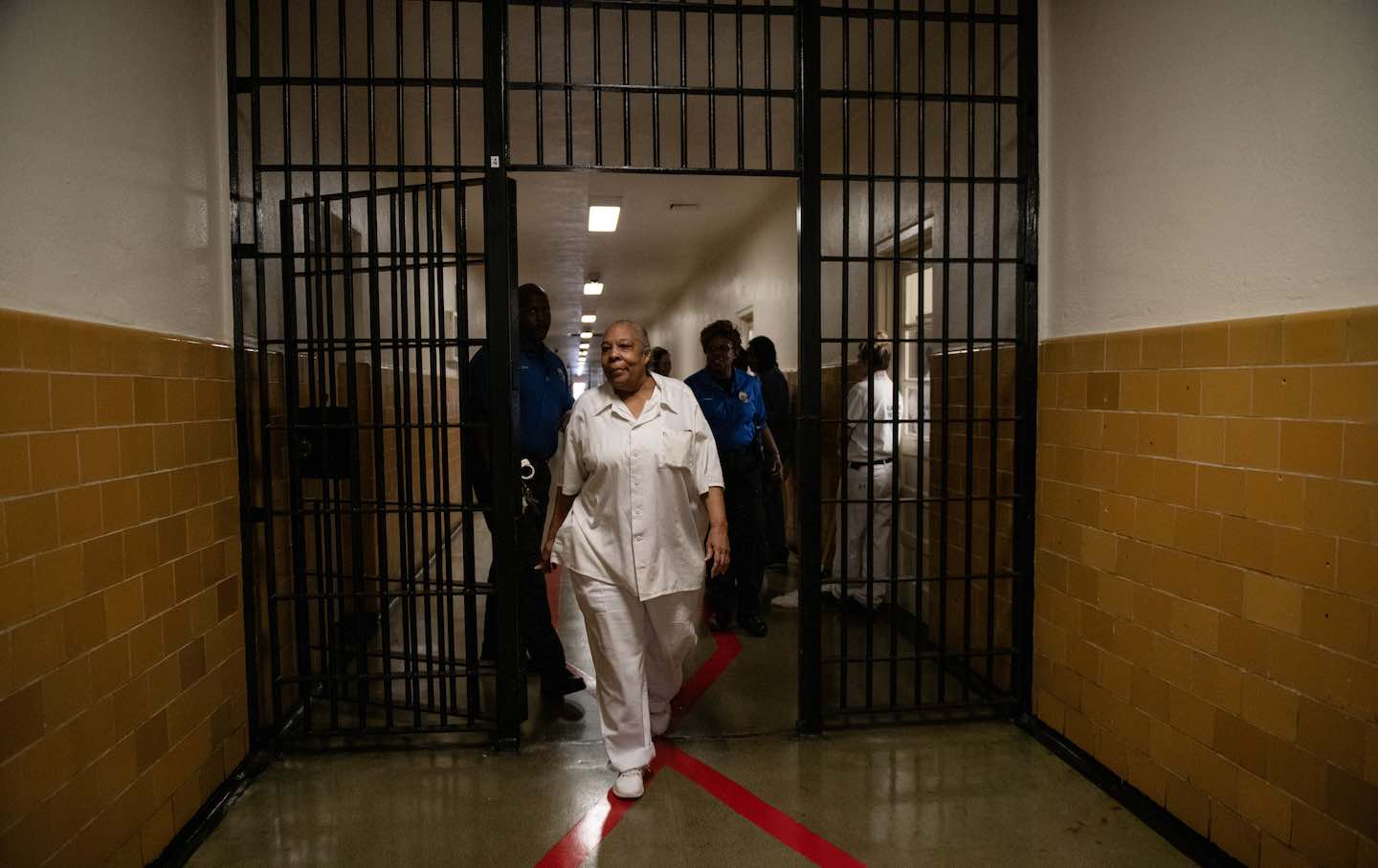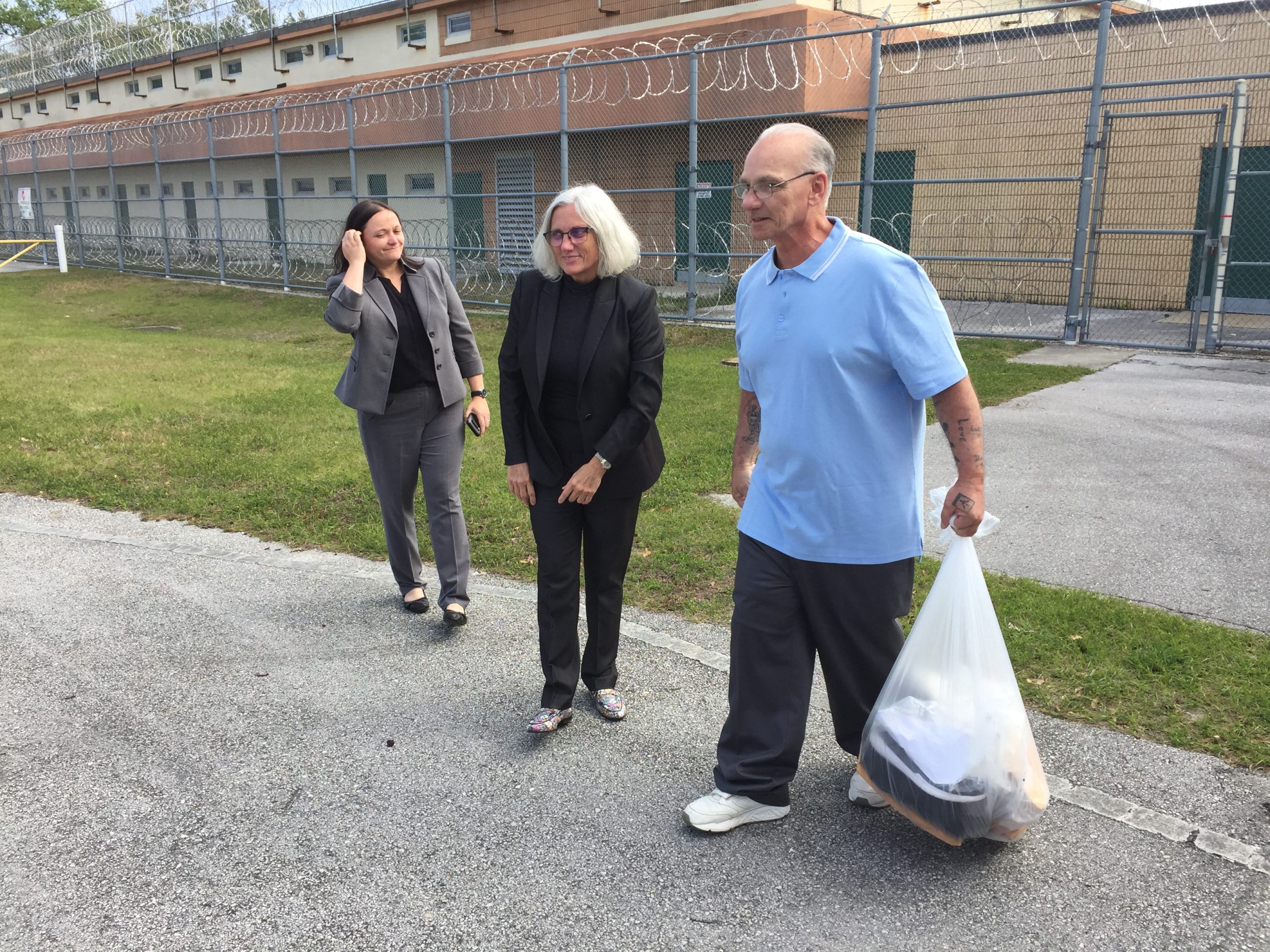Re-Entry
Within the Carceral System
“While people are incarcerated, give them the tools they need to be able to have a productive, lucrative living when they leave so they can provide for their families and break that cycle of recidivism.” — Valerie Jarrett
.
“Certainly, by providing individuals coming out of institutions with ways to become productive citizens, we reduce recidivism. There are fewer victims when individuals have options.” — Loretta Lynch


Inmates in Class at the California Rehabilitation Center, Norco CA



The journey of leaving incarceration can be as complicated as the pathway that originally led to time behind bars! Nicole Green is a social worker at Richmond CA’s West County Detention Facility who helps inmates transition back into society. She begins working with them many months before their release date, to properly assess what their circumstances will be when they re-enter their community, and what support they might need.
California law mandates that inmates have 48 to 72 hours to get in contact with their probation officers upon release from custody, and if they fail to do this they could be sent back to jail. The purpose of this communication is to assure law enforcement that this person does not return to crime. But so much more than that is needed. What the jail system often fails to do is to communicate to inmates the range of their re-entry support options. Green states that “there are some people that are getting out and are going into the same toxic environment that put them in jail in the first place.” She emphasizes that the most effective method of reducing recidivism is simply an inmate’s learning and providing wrap-around services that are needed for each person to have the highest chance at success upon release.
One of the main providers of these services is Contra Costa and Alameda county’s “re-entry success” centers, which work directly with the West County Detention Facility to assist inmates. The regional re-entry centers are run by an organization called Rubicon, whose official mission is to “transform East Bay communities by equipping people to break the cycle of poverty.” Rubicon’s center in Richmond, which is recommended to individuals previously incarcerated at West County, targets four factors of re-entry that increase an ex-inmate’s prospect of overall independence and success.
The first is the individual’s financial situation. The Rubicon website explains that the organization works “with participants to build financial literacy by increasing their knowledge of asset development, consumer protection, credit repair, and household budgeting.” Individuals are offered a financial coach who helps them connect with banks to establish checking and savings accounts, and also helps them set up realistic plans for paying off debts.
The second aim of re-entry that Rubicon tackles is the achievement of a stable income for those recently incarcerated. Rubicon seeks to provide access to immediate employment opportunities for those who need a job right away to support themselves, along with paid transitional training periods and internships to strengthen an individual’s competencies. Each participant is paired with a career advisor who seeks to ensure that they are able to sustain employment for the long term, and overcome challenges that may present themselves in the workplace.
The third essential challenge of re-entry that Rubicon is health, mental as well as physical. Rubicon’s wellness clinicians offer “short term individual therapy sessions, substance abuse intervention, and facilitate connections to treatment providers for longer term care as needed.” This Richmond re-entry success center also works to provide wellness education workshops, and connect individuals to health insurance.
The final area of support is creating connections for participants within the center itself. Rubicon offers “restorative circles” where former inmates meet regularly to discuss their struggles, joys, triumphs and whatever else they wish to talk about, providing an understanding support cohort of individuals who have been through similar experiences. Though not everyone who uses the re-entry center’s services has been incarcerated before, many individuals go through similar struggles, and Rubicon creates an environment where individuals can “reflect on their place in and impact on the community” to which they belong.
Inmates are connected to re-entry services also through the jail itself, where people like Green provide ample support to inmates before their release. The first thing that she does when meeting with an inmate is build a human relationship, She says that if she “doesn’t build trust with the individual that is incarcerated, they’re not going to tell her anything.” She asks questions like: tell me about you. Tell me who you are and what you are faced with. Answers to such questions give her a general sense of what type of support this individual will need upon their re-entry. Even though these questions may sound simple, Green remarks that many of those incarcerated are often quite nervous or unsure if they should answer truthfully, since they have been “institutionalized” to not trust people who work in the system that has incarcerated them.
Once Green gets to know an individual inmate better, she will directly ask: “What do you feel you will need when you get out?” She seeks to obtain all the information to fully assess what services an inmate will likely need. These may include mental health services, temporary housing, substance abuse treatment, and other assistance, all of which are laid out prior to an inmate’s release, in a “transition referral plan” that Green will type up for them so that all of this information is in one place. For example, if a person will likely need housing upon release, Green will refer them to a local service that provides temporary housing. Then, once they are released, Green will make sure they have her number so they can contact her if they need more assistance. If she knows they have agreed to a program, she will contact the program provider directly to make sure they have made a connection.
Green explains that although she works to ensure that each inmate is aware of all the support and resources available to them upon re-entry, at the end of the day it is always up to them to utilize these resources. She says that “those who are really serious, call me. I can pretty much tell if someone is going to re-offend because they won’t call, and if I check with any of the programs, they never make it.”
Inmates at the West County Detention Facility who are realistically looking towards the future, are given every reason to believe that their prospects indeed are manageable, if not bright. Because the services already in place – such as visits by potential employers to the jail, and the social work that Nicole Green practices. But Green recognizes that the current system of re-entry services remains inadequate, and she makes clear that she and other prison reform advocates are pushing for further improvement. They are in support, for example, of re-entry services that will, immediately upon an inmate’s release, transport them to where they are going, regardless of the hour, day or night. Other forms of assistance should also be made available to inmates on the day of their departure.
In brief, we have made progress, but much more remains to be done. It is clear that there are concrete services in place that seek to help inmates change their lives outside of the jail’s walls, but also that there is more help that can be given to ensure that ex-inmates have all the support they need. They deserve to know that the world is not giving up on them – not while they are incarcerated and not when they return to their communities.